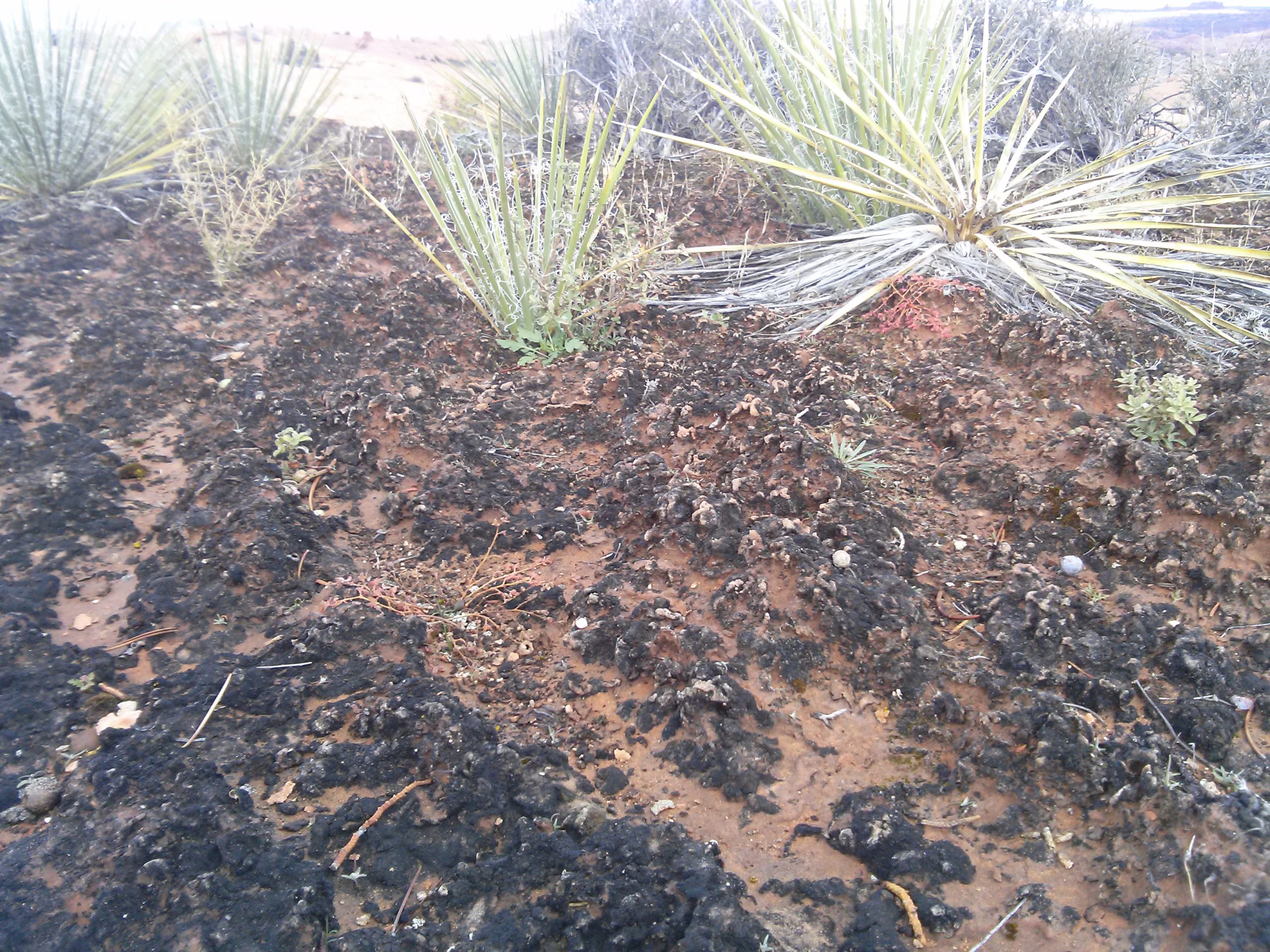“Don’t bust the crust” has long been the mantra for educating visitors about the effects of trampling, riding or driving over the sensitive black soil that covers much of the desert landscape.
But a new study, co-authored by Moab-based U.S. Geological Survey researcher Scott Ferrenberg, has shown that the effects of climate change have similar detrimental effects on the fragile surface known as biological soil crust (biocrust), as that of a mountain bike tire or an off-road vehicle.
“Extensive physical disturbance from livestock/ human trampling and off-road vehicles is known to destroy biocrusts and alter ecosystem function,” the researchers wrote. “More recent work also indicates that … experimental climate change and physical disturbance had strikingly similar impacts on biocrust communities.”
Ferrenberg told the Moab Sun News that he and his colleagues have been conducting research by simulating the effects of climate change on biocrust, while simultaneously studying the effects of human trampling.
In the climate change scenario, plots of land were artificially heated to 7 degrees Fahrenheit above the average, as well as lightly watered to simulate an increase in monsoonal rainfall. In the trampling scenario, volunteers walked heel to toe over a plot every year for 15 years.
“Across the board, the rain addition and the warming has led to equally degraded states very similar to
what a crust would look like if it had been trampled by humans,” they reported.
Ferrenberg said that small rain events stress the mosses that are in the crust by altering their photosynthetic processes.
“All the organisms in the crust are programmed to turn on and start photosynthesizing when they are wet,” he said. “But if they can’t maintain the photosynthetic activity, then they are costing themselves carbon. So over time they are starving themselves to death if they do this enough.”
Fundamental building blocks in desert ecology, biocrusts are a community of living organisms comprised primarily of cyanobacteria, mosses and lichens. They help prevent erosion by holding the underlying sandy soil in place, and they fertilize the soil by providing nutrients such as nitrogen, which allows other plant communities to take hold.
When the crust is destroyed, the soil is more subject to erosion and plant loss, and in what seems like a Catch 22, more monsoonal rainfall actually contributes to dustier conditions as the crust breaks down. That’s because the crust holds moisture in the soil, and when it’s gone, the soil dries out faster.
“We’re going to see more dust, we’ll have more dust storms, and more erosion,” Ferrenberg said. “Diluting the crust means we will have drier soils.”
USGS research ecologist and soil scientist Michael Duniway concurred that climate change experiments conducted by the USGS have strong implications for airborne dust. He added that an aspect of climate change in the Moab area is an increased probability for extended droughts.
Duniway said that droughts result in less plant cover and more exposed soil, and that if biocrust’s ability to stabilize soils were compromised, dustier conditions would prevail.
“Airborne dust is a really big deal, both locally and regionally,” he said. “Locally, airborne dust causes impaired visibility, negatively affecting our visual resources in national parks and other views.”
Duniway said there has also been extensive research studying red dust on mountain snowpack. It can result in faster snow melt, he said, and through a combination of other factors in the hydrologic cycle, it can reduce the Colorado River’s flows by as much as 5 percent.
Duniway said that biocrust has been a topic of research in the Canyonlands region for over 50 years, but that the importance of the crust’s role in desert ecosystem processes was underappreciated in the early years.
“Seminal work by U.S. Geological Survey Ecologist Jayne Belnap and others in the 1990s has really highlighted the importance of biological soil crusts for preventing erosion by wind and water and increasing soil fertility,” Duniway said.
The question as to how long it takes for trampled biocrust to recover is often asked, Duniway said, but the answer is nuanced.
“Recovery of more simple cyanobacteria crusts can happen in as little as one year,” he said. “However, the very dark crusts with a wide diversity of lichens and mosses can take decades or longer. This remains an important area of research for us here at the USGS and with biocrust researchers globally.”
How the crust will fair under climate change, and whether or not it will be able to adapt to new conditions is uncertain, and Ferrenberg said that the results of his experiments are unsettling.
“I’m hopeful that organisms in the crust that are adapted to warmer temperatures will be able to move over time and we won’t lose our crust,” he said. “But unfortunately, this seems to herald a pretty bleak future for biological soil crusts.”
Warmer temperatures, increase in monsoonal rainfall cited as culprits
We’re going to see more dust, we’ll have more dust storms, and more erosion. Diluting the crust means we will have drier soils.





